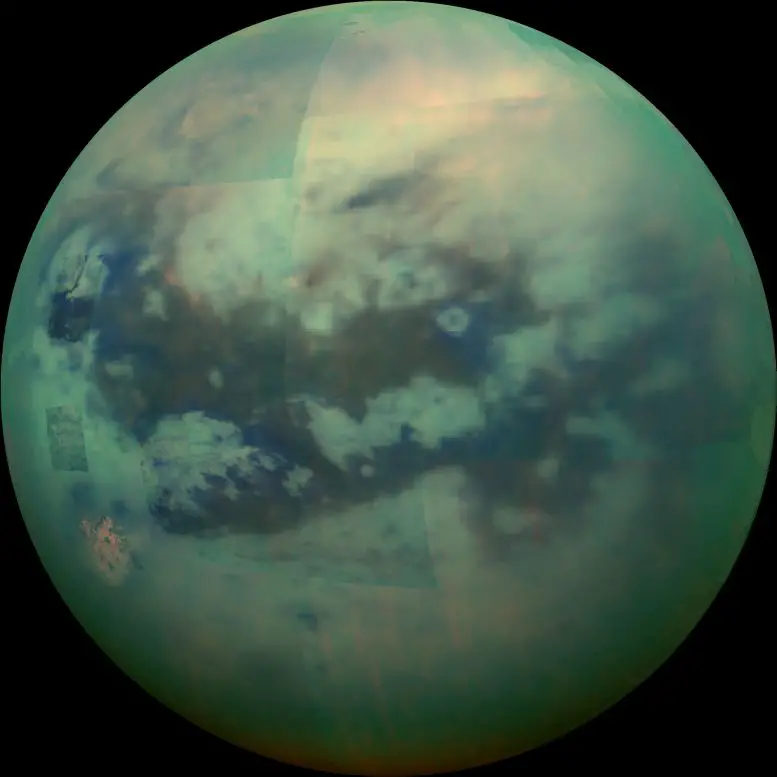"This composite image shows an infrared view of Saturn’s moon Titan from NASA’s Cassini spacecraft, acquired during the mission’s “T-114” flyby on November 13, 2015. Titan has lakes and rivers on its surface, but they are made out of methane and ethane. Credit: NASA" (ScitechDaily.com/We Asked a NASA Scientist: Are There Rivers and Lakes on Other Worlds?)
When we describe the river as the flow of liquid and the lake as a small place where is liquid, we must say that rivers and lakes might be quite usual in the universe.
As an example, the Sarurn's giant moon Titan has lakes and rivers on its surface. But there is no water in those lakes and rivers. There are hydrocarbon oceans with extremely cold methane and ethane. Weak gravitation is also one reason why methane stays liquid on the Titan moon.
The temperature on that moon is -179 degrees Celsius. Tidal forces keep methane moving. But the melting point of that gas is -182 degrees Celsius. And that means methane can exist at least on a larger planet's equatorial area.
Along with weak gravitation on Titan's surface, Saturn's tidal forces affect those gasses. The tidal effect of a giant planet is much stronger than the tidal effect that our moon forms. And that keeps methane moving. The same tidal force keeps oceans liquid under the icy shell of Enceladus.
Weak gravitation and massive tidal forces make it possible that some planets or their moons can have liquid water far below zero Celsius. In that case distance to the center star must be far enough that the solar wind doesn't blow the atmosphere away.
The greenhouse effect and Saturnian tidal forces keep the temperature on Titan so high, that liquid methane can exist.
The melting point of methane is only three degrees higher than Titan's surface temperature. And that means methane can exist at the poles and nightside of that moon. But Saturn's tidal forces and weak gravitation allow that methane is moving.
But in freezing words far away from their central star can be oceans and rivers where liquid gasses like liquid nitrogen and even liquid helium flow.
And oppositely thinking there are worlds where melted lava forms rivers and lakes. Those planets can be so close to their central star that it melts their hemisphere.
https://scitechdaily.com/we-asked-a-nasa-scientist-are-there-rivers-and-lakes-on-other-worlds/
https://en.wikipedia.org/wiki/Ethane
https://en.wikipedia.org/wiki/Methane
https://en.wikipedia.org/wiki/Titan_(moon)
https://shorttextsofoldscholars.blogspot.com/




No comments:
Post a Comment
Note: Only a member of this blog may post a comment.